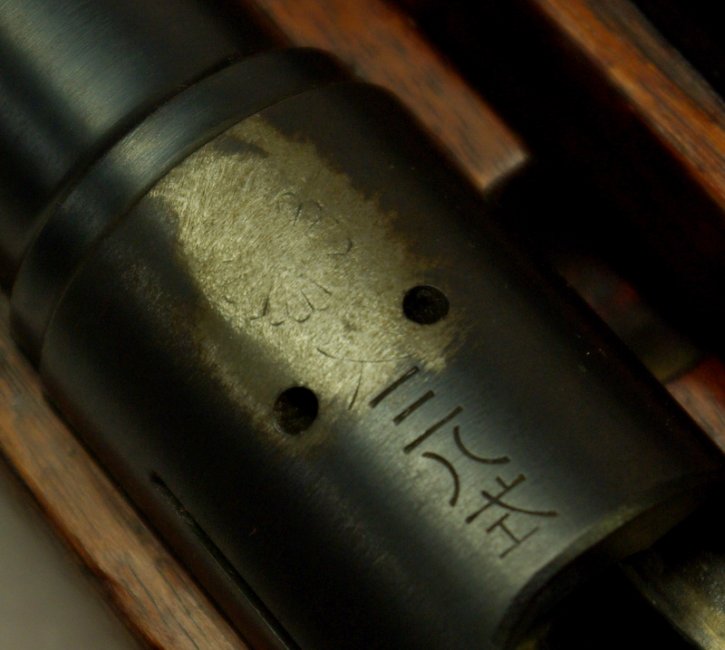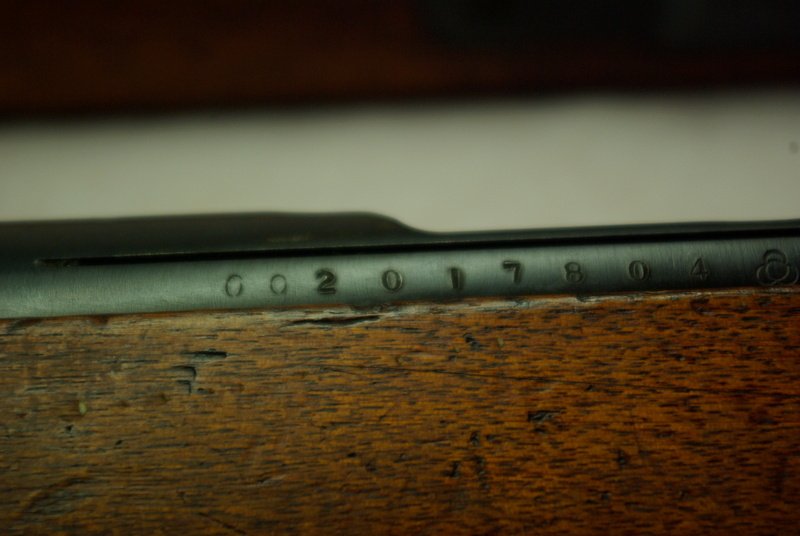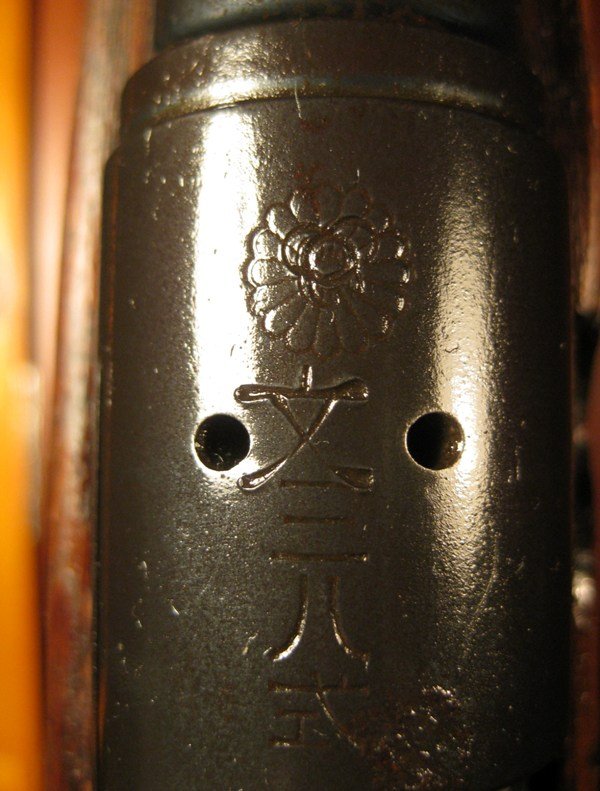mawkie
C&R Whisperer
To add to what MilsurpDan said, mums get defaced for three reasons...
1.) Capture
2.) Export - When T30s and T38s were sold to Britain and Russia the mum was "cancelled" with circular marks peened around the outside of the mum to denote the arm was no longer in the service of the Emperor.
3.) Retired - Rifles removed from service and repurposed for training had their mums cancelled just like those for export. In many cases two zeros were added as a prefix to the SN as well.
In the case of this family heirloom the mum was cancelled when it was retired to become a training rifle. The tell is the mark added to the receiver with the "X" shape. That denotes a training rifle. I've taken a couple of photos of my T38 training rifle and you can just make out the "X" mark as well as the double zeros stamped ahead of the original SN.
1.) Capture
2.) Export - When T30s and T38s were sold to Britain and Russia the mum was "cancelled" with circular marks peened around the outside of the mum to denote the arm was no longer in the service of the Emperor.
3.) Retired - Rifles removed from service and repurposed for training had their mums cancelled just like those for export. In many cases two zeros were added as a prefix to the SN as well.
In the case of this family heirloom the mum was cancelled when it was retired to become a training rifle. The tell is the mark added to the receiver with the "X" shape. That denotes a training rifle. I've taken a couple of photos of my T38 training rifle and you can just make out the "X" mark as well as the double zeros stamped ahead of the original SN.







